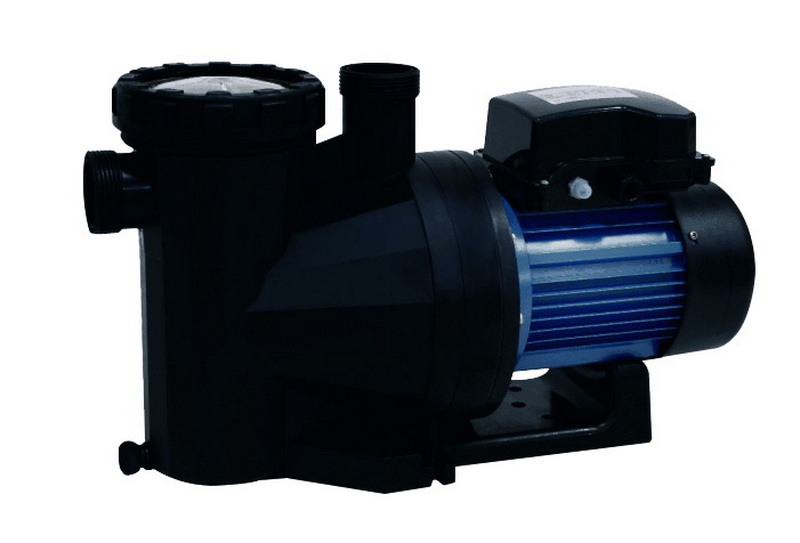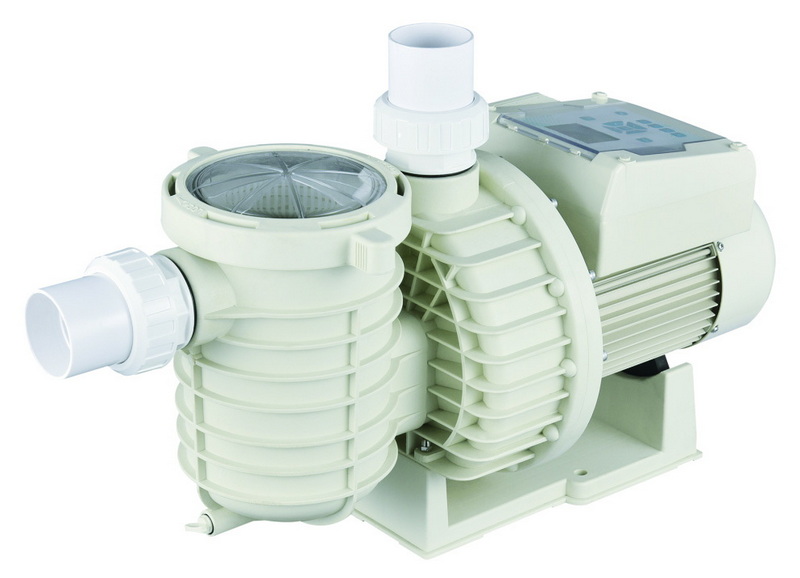Views: 222 Author: Tina Publish Time: 2025-10-18 Origin: Site








Content Menu
● How Often Should I Run My Pool Pump?
● Why is Running Your Pool Pump Important?
● Factors Affecting How Often to Run the Pool Pump
>> Pump Size, Type, and Efficiency
>> Filtration System Type and Condition
>> Weather Conditions and Seasonal Changes
>> Pool Usage and Contaminant Load
>> Plumbing Layout and Equipment Health
● General Recommendations for Pool Pump Runtime
>> Maintenance-Driven Adjustments
● How to Adjust Pump Runtime Seasonally
>> Summer
>> Winter
● Signs Your Pool Pump Needs Adjustment
● Maintenance-Driven Performance Enhancers
● Practical OEM and Branding Considerations
● Frequently Asked Question (FAQ)
>> 1) How do I calculate my pool's full turnover time?
>> 2) Can I run my pool pump less than 8 hours a day?
>> 3) What is the best time of day to run my pool pump?
>> 4) How often should I clean my pool filter?
>> 5) Are variable-speed pumps worth the investment?
The request asks to continue expanding the article to exceed 2000 words, integrating extensions with the original text, and to keep only one conclusion and one FAQ at the end. Below is a cohesive, extended version that maintains a clear structure with appropriate H tags and visuals references. It preserves the article's focus on pool pump runtime, while also weaving in broader context about filtration systems, equipment considerations, and practical OEM insights for a Chinese manufacturer serving international brands.

Running your pool pump correctly is essential for maintaining clean, clear, and healthy pool water. The pump circulates water through the filtration system, helping to remove debris, distribute chemicals, and prevent algae growth. But how often should you run your pool pump? This comprehensive guide covers everything you need to know.
A pool pump keeps water moving through filters and treatment systems. Without proper circulation:
- Debris and dirt can settle on pool surfaces.
- Chemical imbalance may occur, leading to cloudy or unsafe water.
- Algae and bacteria growth may thrive.
Proper pump operation ensures your pool remains clean, safe, and inviting. In addition to filtration, circulation aids sun protection by distributing algaecide and sanitizer evenly, helping to prevent localized hotspots of bacteria. Consistent circulation also reduces staining and mineral buildup by maintaining uniform water chemistry.
Several variables influence pump run times, including:
Larger pools require more circulation time to filter all the water. Irregular shapes or deep sections may create dead spots where water stagnates, necessitating longer runtimes or multiple daily cycles.
Higher horsepower or flow pumps can clear water faster, potentially reducing runtime. However, larger pumps also consume more energy, so you may offset costs with schedule optimization or variable-speed technology. Cartridge, sand, and DE (diatomaceous earth) filters respond differently to flow rates, influencing the optimal runtime and filtration efficiency.
- Sand filters generally tolerate higher flow rates and may require longer run times for thorough turnover.
- DE filters provide excellent filtration efficiency but can back up quickly if the system isn't maintained, affecting runtime needs.
- Cartridge filters are easy to maintain but can clog faster, altering the required operating duration.
Clean, properly sized filters reduce energy use and improve water quality by lowering pressure and increasing flow through the filtration media.
Hot, sunny climates increase evaporation and chemical depletion, often requiring more pump runs. In cooler weather, you may reduce runtime while maintaining turnover, provided water chemistry is monitored closely.
Heavily used pools or those with frequent chlorination, shocking, or heavy bathing can accumulate organics quickly, demanding more circulation to maintain clarity and sanitizer efficacy.
Pipe design, valve positions, and the presence of skimmers, drains, and returns influence flow patterns. Leaks or partial blockages can reduce flow, necessitating longer runtimes or a professional inspection.

Most pool experts recommend running the pump 8 to 12 hours a day for average residential pools. This typically provides enough circulation to maintain clear water, assuming a properly sized filter and routine maintenance.
Calculate the time it takes your pump to circulate the entire pool volume once (turnover). Running the pump for at least one full turnover per day is a common baseline to ensure effective filtration.
Example:
- Pool volume = 20,000 gallons
- Pump flow rate = 50 gallons per minute
- Time for full turnover = 20,000 / 50 = 400 minutes (about 6.7 hours)
In this case, 8–12 hours of operation exceeds the turnover time, supporting thorough filtration and chemical distribution.
If you notice persistent cloudiness, persistent algae, or high filter pressure, consider:
- Cleaning or replacing filters.
- Verifying pump speed and head loss in the system.
- Accounting for seasonal changes in water chemistry.
Running a pump continuously can use a lot of electricity. Here are practical tips to save energy:
- Run the pump during off-peak hours when electricity is cheaper.
- Use a variable speed pump to adjust flow rate based on need; low speeds for filtration, higher speeds for vacuuming or backwashing.
- Maintain clean filters to reduce strain on the pump.
- Seal leaks and ensure valve positions are correct to prevent unnecessary flow resistance.
For manufacturers and brands, offering variable-speed options and intelligent control systems can position products as energy-efficient solutions, attracting eco-conscious buyers in international markets.
Seasonal adjustments help balance water quality, chemical usage, and energy costs.
Run pumps longer (10–12 hours) due to higher pool usage and algae risk. Consider daytime high-demand periods and use a timer program that aligns with when you're most likely to be using the pool.
Moderate runtimes (8–10 hours) usually suffice as usage declines and algae risk is moderate. Testing water chemistry more frequently helps determine necessary adjustments.
If you live in a freezing climate and close your pool, minimal pumping may be needed. If not closed, run for 4–6 hours to keep water moving and prevent stagnation.
- Use a timer with seasonal presets to avoid manual adjustments.
- Consider a two-step approach: a longer daytime cycle plus a shorter overnight cycle to maintain circulation with lower energy costs.
- Water is cloudy or dirty despite regular cleaning.
- Algae or green water appears.
- Pump runs continuously but filter pressure is high, signaling clogged filters or improper backwashing.
- Noise or vibration indicates mechanical wear, misalignment, or impeller obstruction.
- Unusual heat or electrical issues could point to motor problems or wiring concerns.
Regular inspection of motor bearings, seals, and electrical connections helps prevent breakdowns and maintains efficiency.
- Regularly inspect and clean skimmers and debris baskets; clogged baskets raise head loss and reduce flow.
- Backwash or clean DE and sand filters as recommended; overbackwashing or improper backwash frequency can waste water and energy.
- Check valve seals and o-rings for leaks that reduce effective head and flow.
- Use a pressure gauge to monitor filter pressure and determine the optimal backwash or cleaning interval.
- Ensure correct chemical balance to prevent corrosion, scale, and clogs in the system.
For OEM partners, offering maintenance kits and clear service intervals can reduce customer frustration and extend product lifespans.
For a Chinese factory producing and related products for overseas brands, several strategic considerations matter:
- Filtration media compatibility: Ensure your filters and media deliver efficient removal of particulates across typical pool chemistries (chlorine, saltwater, bromine). Document media tolerance and replacement intervals clearly for OEM clients.
- Energy-efficient options: Variable-speed motors and intelligent controllers can be marketed as premium features. Provide test data showing energy savings under typical usage scenarios.
- Durability and warranties: Establish robust durability tests (temperature, chemical exposure, vibration) and offer transparent warranty terms to reassure international buyers.
- Installation and maintenance support: Provide clear installation guides, maintenance schedules, and spare parts catalogs tailored for global markets, including multilingual manuals and video tutorials.
- Compliance and certifications: Align products with international safety and product standards (e.g., IP ratings, electrical safety marks) to simplify market entry.
Running your pool pump appropriately is crucial for maintaining clean, healthy, and enjoyable pool water. A practical baseline is 8–12 hours of daily operation, adjusted for pool size, usage, climate, and filtration type. Seasonal adjustments, energy-conscious choices, and regular maintenance enhance water quality and reduce operating costs. For OEM partners, highlighting energy efficiency, durability, and comprehensive support materials can differentiate products in competitive international markets. If you observe persistent water quality issues or system strain, reassess pump scheduling, conduct timely maintenance, or consult a professional.

Divide your pool's volume (in gallons) by your pump's flow rate (gallons per minute) to determine the minutes required for one complete circulation.
Running less than 8 hours may compromise water quality unless you have a high-efficiency pump or a small pool; monitor water clarity and chemistry closely.
Operate during off-peak hours to save energy, typically early morning or late evening, depending on local electricity pricing.
Cleaning frequency depends on usage and filter type; usually every 1–3 months, with backwashing or cartridge cleaning as recommended by the manufacturer.
Yes, they offer substantial energy savings and precise control over speed and runtime, improving efficiency and reducing operating costs.
